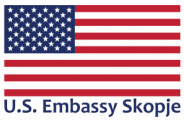International NGOs pushed the button to fight false news immediately after 1980, when the Russian KGB released a disinformation that allegedly behind the AIDS epidemic stands CIA, experimenting with the virus allegedly of several Haitian residents who then spread the disease, and the other version is about other experimental analyzes with a biological warfare agent. It was clear that this fabricated news would create massive panic and hatred for those who supposedly released the virus, which is the US government that is the number one enemy and criticizer of Russia, and that is actually the mission. After several years, scientists proved the opposite for this false news, but the damage has already been done.
So imagine what damage the Internet is doing now, by sharing this kind of false news at the speed of light.
There is a very good example in journalism, which points to the need to verify the news before publishing, because denying or repairing the news is like trying to collect feathers, which is an impossible act. This means that if the false news has reached to a million people, perhaps the denial, the correction, or the disclosure will not reach even half of this number of people. That’s why it is more necessary to work on raising awareness. The old say “better to prevent than to cure”.
Recommendations of the Atlantic Council to fight false news
The “Atlantic council” has prepared several recommendations through which ordinary citizens and institutions can deal with false news that only aim at creating tensions and discord in a particular society. Recommendations are as follows:
Understand the “Big Narrative” of the context
The big narratives, or the big picture of the history of a society help explain the common meaning of the past, the present and the future of international politics. They are a story that a group can understand and identify with their lives. These narratives are also a way in which political actors shape the behavior of domestic and international audiences. As individuals, they help us understand the conversations in the context in which they unfold.
Double check of the sources
Journalists are always trained to check their facts through at least three sources before publishing, and individuals should try to read at least twice the information before they believe it.
You need to ask questions about the source and bias of the information, and after a short break and reflection, you can come to the conclusion if certain information is correct.
Is the source of the news an organization or an individual? What is the mission of that organization? If the news or the photo comes from a web site that publishes conspiracies, the news is likely to be fake. We should ask ourselves whether the source has a link, or by whom it is funded, is it a country? If so, imagine what does the creator want to achieve. You only need one minute to make sure, and then think twice before sharing a news.
Look twice, read every line
The concept of critical discourse analysis (CDA) refers to the ways in which text or speech that is considered politically or culturally influential can be analyzed. When reading an article, beware of some key elements such as:
Agent-patient relationship: Who does what? Many articles will continually portrait certain groups or people as initiators (enforcers), while others are continuously receiving these actions (they are passive). Look for these elements in the texts to understand the purpose of the author better, in which way he wants the reader to perceive the information.
Suggestions: See how the sentence is structured. Are there “us” versus “them” attitude before and in the center? If so, does the group “us” make most of the good, and the group “them” makes most of the bad things? Are the negative actions of the group “us” justified, while the positive actions of “them” are hidden? This can help you understand the doubts that the author can set.
Failure: Viewing what is not included in the text is a difficult task, but factual flaws help to reveal the author’s purpose, or the point the author tries to portray.
Pictures: Are photos included? Which message is being sent? Is it true or is it a “snapshot” that is taken out of the context? What other photos could have shown the same action? At the practical level, determine if the image has changed.
Awareness is the first step in fighting disinformation and false news, and can help understand how narratives are being analyzed. Because information overload increases, and electoral rhetoric develops, individuals will be the first obstacles to the spread of false or distorted narratives.
“Stop fake Ukraine” gives directions to fight the false news
The organization “Stop Fake Ukraine” gives other directions to fight false news from its own prism. Due to the political and historical conflicts between Russia and Ukraine, the soil for false news here is very good. Through their examples they give us directions on how to fight false news that is most easily passed on to readers with a false image or video.
Fake photos
This is the most popular tool for transmitting false news, but it’s one of the easiest to detect. Just a right-click on the mouse on your computer, and clicking on the Google Image Search option will immediately show you all the places where the image is posted, and thus you will understand if the image is a fake.
If you have another search engine other than Google, then you can install numerous other special add-ons. For example, “Who stole my pictures” is very useful. This plug-in can search not only Google, but also Yandex, Tineye, or all three at once, and thus make sure if the image has previously appeared elsewhere and in another context.
And you can even take the image selected with the mouse and place it on the browser, and it will automatically show you where the image was posted.
Using this method you can check two very important aspects. The first is whether the image is original or it has been edited. The second aspect is the date of publication of the image and its true theme. For example, you can see if someone is trying to display the war events in Syria as if they were in Ukraine.
Fake videos
With videos it’s a little harder than with the pictures. You need to click on the video and go to the YouTube channel to see when the video is posted and in which context.
And even if the release date is recent, one needs to see if the same video has been published more times. If so, it is probably false.
Read the comments below the video. Often, people who have seen the video before, write comments and tell whether the video is false or was published before.
Also take into account the details in the video. Look at the car’s registration plates in the frames, or the inscriptions of the stores, objects, etc., because each of them is an indicator of a certain place.
The video can also be searched as an image, if you make a “snapshot” of the video and place it on the Google browser to see if it is published in another context and time.
“German Marshal Fond(GMF)” recommended a common EU fight against false news.
“The German Marshal Fond (GMF)” recommends investing most on policies that will regulate the Internet space. Although the on-line regulation of the platform in North Macedonia is perceived as a pressure on free journalism, most of the international non-governmental organizations think that there should be some regulation, and that this would help fight false news. In this way, it is considered that the responsible media will also be helped by making a distinction, but also to those who have been e target of false news in order to have someone to look for responsibility.
“German Marshal Fond (GMF)” also recommends platforms, such as our F2N2 platform to fight false news, but also raise awareness among citizens about the massiveness of these materials that have a negative goal and an agenda. Germany urges portals with over 2 million followers to remove hate speech, remove false news and illegal materials within 24 hours of the warning. The penalties if these guidelines are not respected by the government are up to 50 million euros. Authorities in Germany have formed a team of 1,200 people who monitor and erase false news on social networks with the biggest reach.
But the fund warns that this regulation should be under EU monitoring because authorities in their countries can use this tool to calculate with political opponents. Especially because, according to the media freedom indexes in Central and Eastern Europe, only the Czech Republic and Slovakia are countries with completely free media.
The organization’s recommendations are that Central and Eastern European countries should try to involve local companies, especially those dealing with “cybersecurity”, such as local giant Avast Software or ESET, in developing their own facilities in this segment of information security.
“National endowment for democracy” recommends training of journalists
“National endowment for democracy” recommends training to journalists who are also often targets of false news because they are insufficiently interested in the source of a particular photo or video, although the tools provided by search engines are numerous.
According to this organization, journalists should be directly involved in the creation of strategies and policies to fight false news, because they are often inadvertently targets of these news that they continue to share. Their goal – to search for the truth on behalf of the public – is best aligned with this task, according to the organization.
A study by the International Center for Journalists found that 71 percent of journalists use social media to find new stories to write about and only 11 percent use social media verification tools.
According to this organization, journalists should be created a habit of checking photos and videos in the same way they check the facts in the texts.
“Kremlin watch” also recommends better regulation of local authorities in the fight against false news, but also greater engagement in developing new tools that would reduce the flood of this kind of false news.
This organization notes that the Kremlin’s methods are being improved on a daily basis and better tools are used to share the false news on the Internet, so it is necessary to monitor where and how they share the texts and intervene because the numbers of how many people get this false information are huge.
“IRI”, on the other side, suggests that the widespread use of social media has a huge impact on the culture, business and politics of the world as a whole with potentially positive and negative effects.
Given the harmful consequences of false news in social media, there is a profound need for disclosing false information, controlling and/or preventing their spreading. “IRI” proposes an advanced framework for identifying tweets with false informative content using a variety of techniques, including a statistical analysis of a Twitter account, search for reverse images, cross-checking false news sources and mining data.


